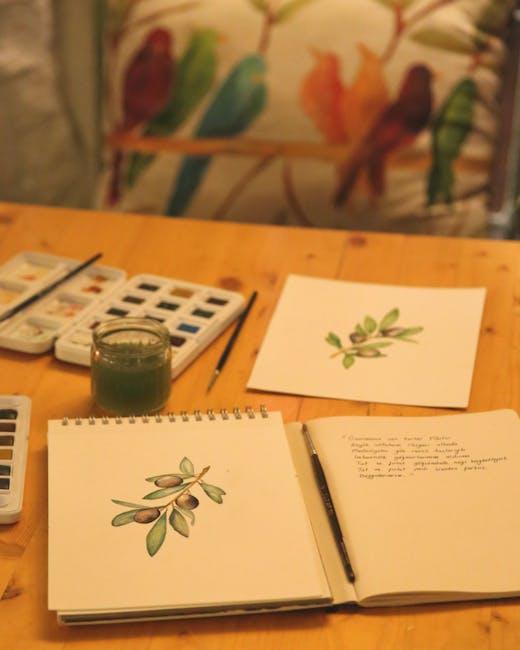In today’s rapidly evolving economic landscape, families are continually seeking ways to diversify their investments and secure their financial futures. While traditional avenues such as stocks, bonds, and real estate have long dominated the investment sphere, a growing number of families are turning their attention to the art market as a viable and rewarding option. This analytical exploration delves into five compelling reasons why investing in art should be considered a strategic component of any family’s financial portfolio. By examining the multifaceted benefits—ranging from financial appreciation and portfolio diversification to cultural enrichment and legacy building—this article aims to demonstrate the unique value proposition that art investments can offer. With a confident lens, we will uncover how art not only serves as a tangible asset but also enhances family cohesion and intergenerational wealth transfer, ultimately making it a prudent choice for forward-thinking families.
Understanding the Long-term Value of Art Investments
Investing in art transcends mere financial considerations, offering a multifaceted value that enriches lives over generations. Unlike volatile stock markets or depreciating assets, art maintains an enduring allure, often appreciating in value over time. Long-term art investments provide families with a tangible asset that can be passed down, creating a legacy that reflects both cultural and personal values.
- Stability and Appreciation: Art markets have historically shown resilience, with many artworks appreciating significantly over decades.
- Emotional and Aesthetic Value: Beyond financial returns, art offers emotional satisfaction and enhances living spaces with beauty and inspiration.
- Diversification: Including art in an investment portfolio adds diversity, potentially offsetting risks associated with traditional investments.
- Cultural Legacy: Art can serve as a family heirloom, fostering a sense of identity and continuity across generations.
- Tax Benefits: In some jurisdictions, art investments may offer tax advantages, making them an attractive option for wealth management.

Enhancing Cultural Appreciation and Family Bonding
Art has a unique ability to transcend boundaries, bringing people together across generations and cultures. Investing in art can serve as a powerful tool for families to deepen their understanding of diverse cultures and strengthen familial ties. By engaging with various art forms, families can foster a shared appreciation for different traditions and histories, creating a richer cultural tapestry within their own homes.
- Shared Experiences: Exploring art as a family creates opportunities for shared experiences and discussions, allowing each member to express their interpretations and emotions.
- Cultural Exploration: Art offers a window into different cultures, enabling families to explore and appreciate the diversity of human expression.
- Emotional Connection: Experiencing art together can enhance emotional bonds, as family members share moments of wonder and introspection.
- Creative Inspiration: Exposure to art can ignite creativity in both children and adults, encouraging artistic pursuits and innovative thinking.
- Tradition and Legacy: Collecting art can become a family tradition, with pieces passed down through generations, each carrying stories and memories.

Diversifying Family Portfolios with Tangible Assets
In the ever-evolving landscape of investment opportunities, art emerges as a compelling choice for families seeking to diversify their portfolios with tangible assets. Art not only provides a unique hedge against inflation but also offers an opportunity for cultural enrichment and personal enjoyment. Here are some reasons why investing in art could be a prudent move for families:
- Stable Long-term Value: Unlike volatile stock markets, the art market has shown resilience and steady appreciation over time. Masterpieces often retain or increase their value, making them a secure long-term investment.
- Portfolio Diversification: Art introduces a non-correlated asset to your portfolio, reducing risk by balancing the fluctuations of traditional investments like stocks and bonds.
- Tax Benefits: Investing in art can provide tax advantages through charitable donations or tax-free exchanges, enhancing overall financial strategy.
- Legacy Building: Art can be passed down through generations, serving as a legacy that not only holds financial value but also carries cultural and emotional significance.
- Personal Enjoyment and Prestige: Beyond financial returns, art offers aesthetic pleasure and a sense of prestige, enriching family life and fostering a deeper appreciation for creativity.

Leveraging Art as an Educational Tool for All Ages
Art has the unique power to transcend traditional learning methods, offering diverse benefits that cater to a wide range of ages and abilities. Families can utilize art to foster creativity and critical thinking skills, which are essential in today’s fast-paced world. By integrating art into educational activities, parents can stimulate their children’s curiosity and encourage innovative problem-solving. The adaptability of art allows for tailored educational experiences that can be as simple or complex as needed, making it a versatile tool for lifelong learning.
- Enhances Cognitive Abilities: Engaging with art can improve memory, attention, and visual-spatial skills, which are crucial for academic success.
- Encourages Emotional Expression: Art provides a safe outlet for expressing emotions, helping individuals of all ages process feelings and experiences.
- Boosts Confidence and Self-Esteem: Completing an art project can give children and adults alike a sense of accomplishment, reinforcing self-worth and confidence.
- Facilitates Cultural Awareness: Exploring different art forms introduces families to diverse cultures, fostering a deeper understanding and appreciation of global perspectives.
- Promotes Family Bonding: Participating in art activities together can strengthen family ties, offering opportunities for shared experiences and communication.



